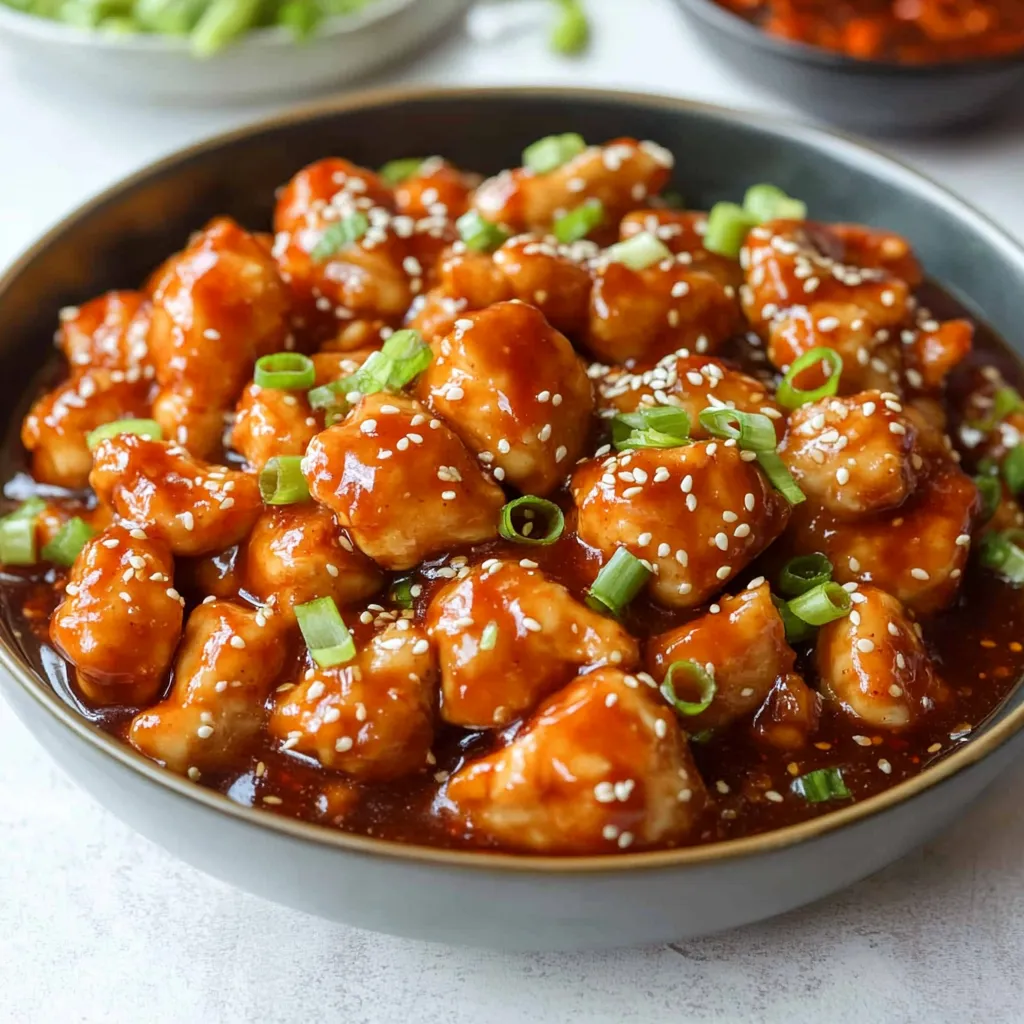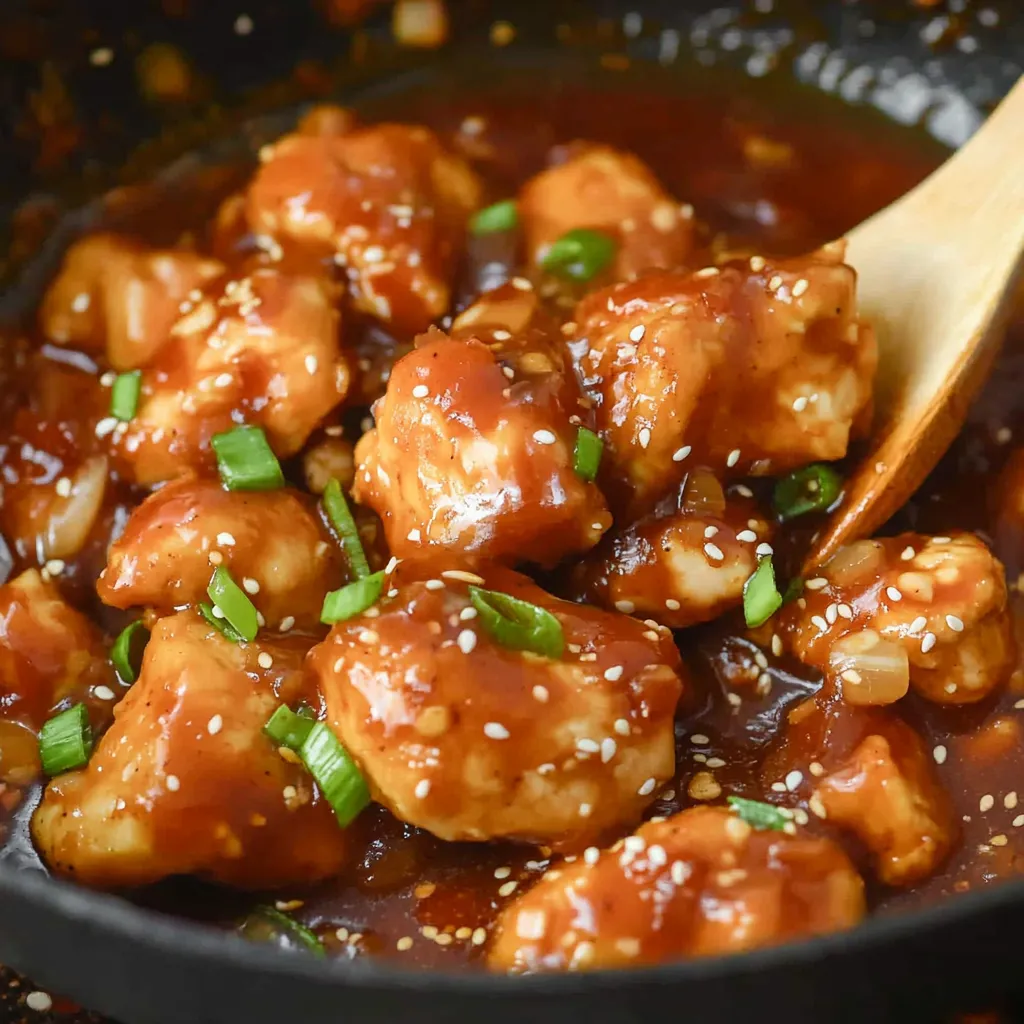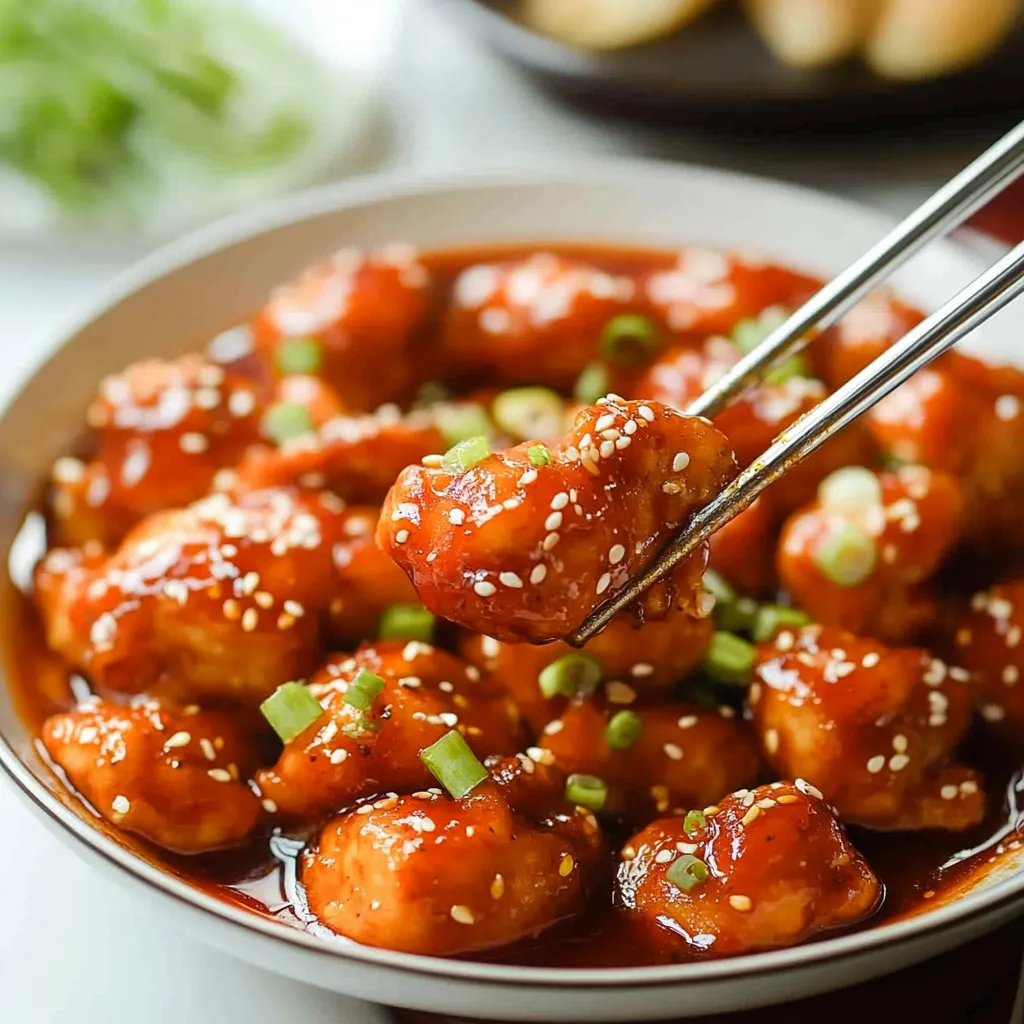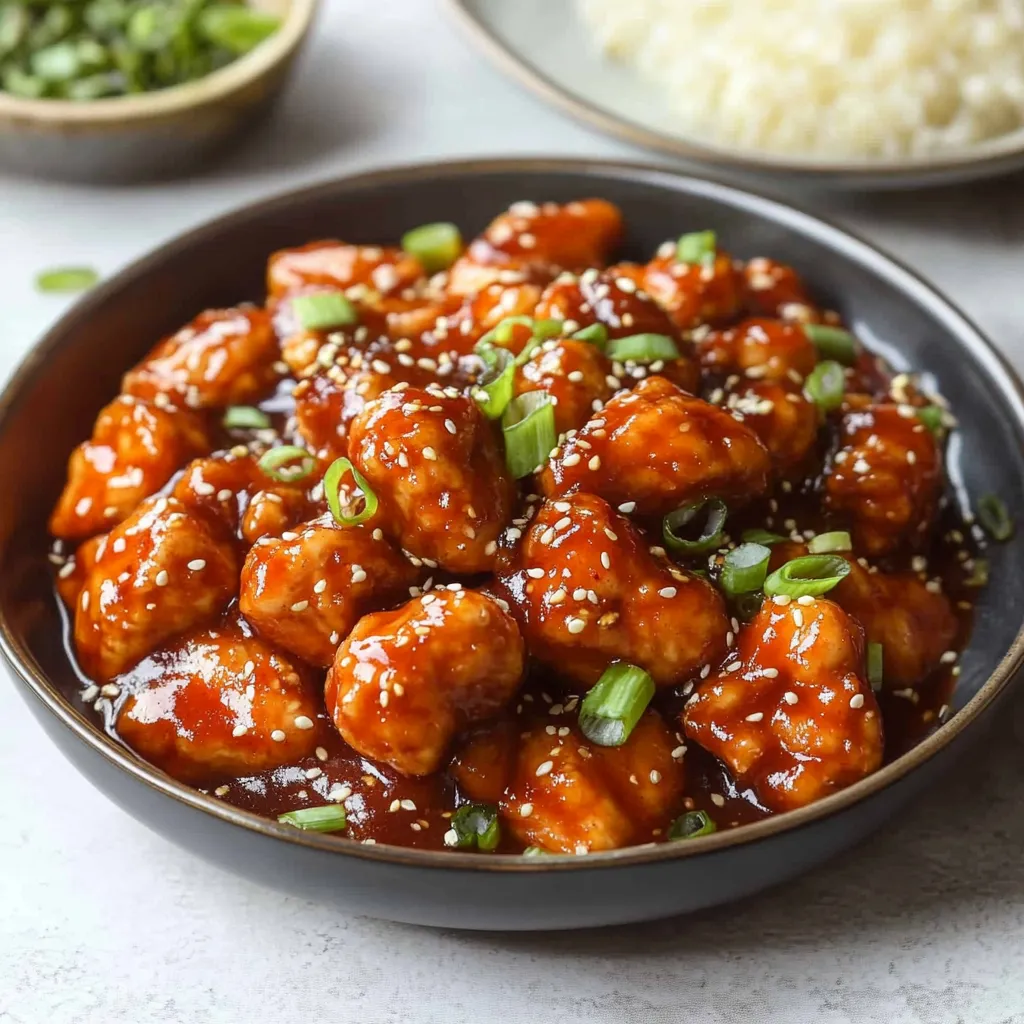 Pin it
Pin it
Picture juicy chicken bits with a perfect crunch, drenched in a shiny, bright red sauce that hits your tongue with sweetness, heat, and umami all at once. This Gochujang Chicken turns ordinary thighs into a mouthwatering meal that brings Korean flavors right to your table. The chicken stays wonderfully crunchy even after you've coated it in that rich, tasty sauce, giving you the best of both worlds in every bite.
The first time I played around with gochujang in my cooking, I couldn't believe how this one ingredient totally changed everything. My kids, who used to run from anything spicy, now beg for this chicken every weekend. The trick is nailing that crunchy outside and getting just the right balance between the gochujang's kick and a touch of sweetness.
Must-Have Components
- Boneless chicken thighs: Go for plump, firm thighs with even pink coloring. You need dark meat here since it won't dry out during high-temp cooking and packs more flavor. Cut away extra fat but leave enough to keep things juicy and tasty.
- Gochujang paste: This Korean chili paste is what makes the magic happen. It should be bright red and thick like jam. Brands range from barely warm to crazy hot, so newcomers might want to start mild. Good paste smells rich with hints of fermented beans and peppers.
- Cornstarch: Only use smooth, clump-free powder to get that perfect crunch. It forms a thin, crispy layer that stays crunchy even after saucing. Make sure it's fine and dry without any moisture spots.
- Neutral cooking oil: Pick something with a high smoke point like avocado, grapeseed, or plain veggie oil. Your oil shouldn't have any smell so it won't mess with the other flavors. Pour enough to make a 1/4 inch pool in your pan.
- High quality soy sauce: Go for naturally brewed stuff with a deep amber color and rich smell. Good soy sauce tastes complex and savory, not just salty.
- Local honey: Raw, unfiltered honey works best here, making the sauce glossy and gorgeous. The flowery hints in honey work wonders with spicy gochujang and help cool down the heat.
Flavor-Boosting Add-ins
- Fresh garlic cloves: Pick solid, weighty heads with snug, unmarked cloves. Fresh garlic brings zippy flavors that powdered stuff just can't match.
- Green onions: Find bright, snappy stalks with lively green tops. They add both taste and eye appeal, bringing a fresh bite and pretty color contrast.
- Toasted sesame oil: This finishing touch should be dark amber with a rich nutty smell. Just a tiny drizzle adds authentic Korean character.
Cooking Method
- Getting Your Chicken Ready
- Start with chicken thighs that aren't cold from the fridge—chilly meat won't coat or cook right. Slice each thigh into same-sized 1.5 inch chunks so they cook evenly. Here's a twist: DON'T dry the chicken—that natural dampness helps the cornstarch stick better. Take a quick look at each piece and trim any big fat spots, but keep some for good flavor.
- Making It Crispy
- Measure your cornstarch carefully—too much makes a gummy mess, too little won't crisp up. Sprinkle it all over your chicken pieces, then gently rub it in with your hands until everything's evenly covered. You want a thin, even coating, not clumpy or dusty. Let it sit for 5 minutes so the starch can really stick.
- Frying It Up
- Get your oil to exactly 350°F—this temp is super important for getting golden outsides while keeping juicy insides. To test it, drop in a tiny bit of coating—it should bubble right away but not burn up. Cook small batches—crowding the pan ruins the crunch. Give each piece plenty of room to form a good crust. Fry for 5-6 minutes on each side until they're deep gold, tweaking the heat as needed.
- Whipping Up That Amazing Sauce
- While your chicken fries, mix your sauce: start by stirring gochujang with soy sauce to thin it out, then add honey and minced garlic. It should end up smooth and slightly thick. In another pan, cook finely chopped onions until clear—they'll build your sauce's base. Pour in your gochujang mix and simmer until it thickens a bit and looks shiny.
 Pin it
Pin it
Nailing The Perfect Sauce Texture
Look for these signs in your sauce—it should coat the back of a spoon and drip off slowly, leaving a clear trail when you run your finger through it. When it's just right, it'll cling to your chicken without making it soggy.
I started playing with gochujang recipes in my tiny first kitchen, testing different heat levels and sauce mixes. I've learned that medium-hot gochujang makes the most well-rounded flavor that everyone can enjoy. When the sauce gets a bit caramelized on that crispy chicken, it takes me back to the food carts I saw in Seoul.
Making It Look Amazing
Build your dish thoughtfully—first put down a base of steamed rice, then arrange your saucy chicken pieces nicely on top, and finish with a handful of sliced green onions and toasted sesame seeds. Making it look good actually makes it taste better.
 Pin it
Pin it
Keeping Everything Just Right
Getting this dish perfect is all about timing. Keep your first batch of fried chicken warm in a 200°F oven while you finish the rest. This keeps it crispy without overcooking. When it's time for sauce, work fast to coat everything evenly while the sauce is still hot and flowing.
Saving Leftovers
Keep any leftover chicken and sauce in separate containers with tight lids. When you want to eat it again, warm the chicken on a wire rack in a 350°F oven until it's hot and crispy, then toss with reheated sauce. Don't use the microwave—it'll ruin all that great texture you worked for.
 Pin it
Pin it
Frequently Asked Questions
- → What's gochujang?
- Gochujang is a Korean chili paste with a mix of sweet, savory, and spicy flavors. Find it in Asian or big grocery stores.
- → How can I make it less spicy?
- Cut back on the gochujang and add a little extra sugar for a milder but still tasty result.
- → What sides pair well?
- It’s awesome with fluffy rice and veggies, or you can add sides like kimchi and other small Korean dishes.
- → Can chicken breast be used?
- You can! Just watch closely since chicken breast can dry out quicker than thighs if overcooked.
- → How long does it last?
- Keep it in the fridge, sealed, for up to 3 days. Reheat in a pan to keep that crispy texture fresh.
